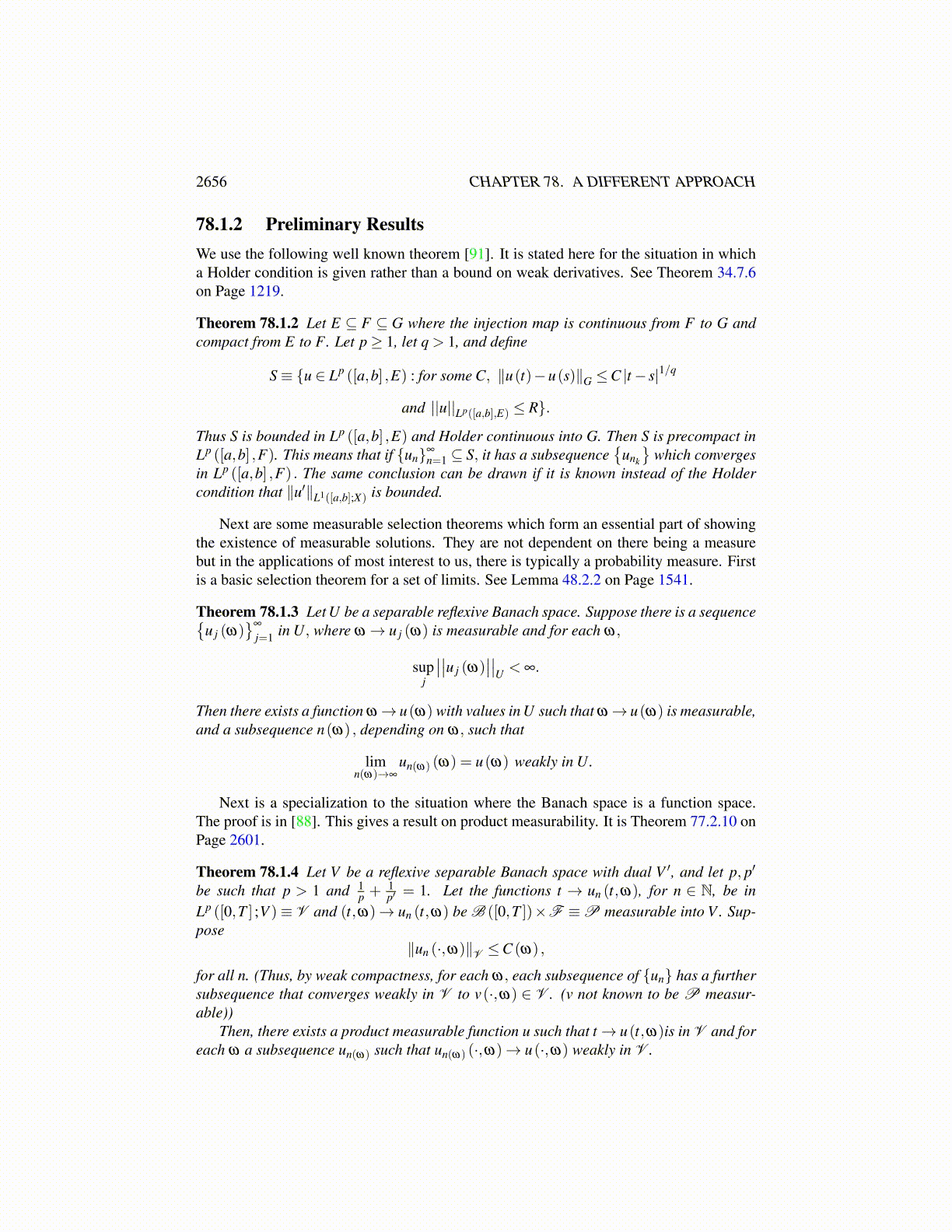
2656 CHAPTER 78. A DIFFERENT APPROACH
To begin with, we will assume p≥ 2. The reason for this is that we want to consider∫ T
0
⟨B′u,u
⟩dt
and this won’t make sense unless p≥ 2. However, this restriction is not necessary if B is aconstant operator, as we show in the succeeding section.
78.1.1 General Assumptions On A
The case A(u,ω) for u∈ V given by A(u,ω)(t) = A(u(t) ,ω) is included as a special case.In addition to this commonly used situation, we are including the case where A(u,ω)(t)depends on past values of u(s) for s≤ t. This makes our theory useful in situations wherethe problem is second order in t. The following definition is the standard one [99].
Definition 78.1.1 For X a reflexive Banach space, we say A : X→P (X ′) is pseudomono-tone and bounded if the following hold.
1. The set Au is nonempty, closed and convex for all u ∈ X . A takes bounded sets tobounded sets.
2. If ui→ u weakly in X and u∗i ∈ Aui is such that
lim supi→∞
⟨u∗i ,ui−u⟩ ≤ 0, (78.1.3)
then, for each v ∈ X , there exists u∗ (v) ∈ Au such that
lim infi→∞⟨u∗i ,ui− v⟩ ≥ ⟨u∗(v),u− v⟩. (78.1.4)
We will assume in this section in which B is time dependent that p ≥ 2. The specificassumptions on A(·,ω) are described next.
• growth estimateAssume the specific estimate
sup{∥u∗∥V ′ : u∗ ∈ A(u,ω)} ≤ a(ω)+b(ω)∥u∥ p̂−1V (78.1.5)
where a(ω) ,b(ω) are nonnegative and p̂≥ p.
• coercivity estimateAlso assume the coercivity condition: valid for each t ≤ T ,
inf(∫ t
0⟨u∗,u⟩ds : u∗ ∈ A(u,ω)
)
+12
∫ t
0
⟨B′u,u
⟩ds≥ δ (ω)
∫ t
0∥u∥p
V ds−m(ω) (78.1.6)